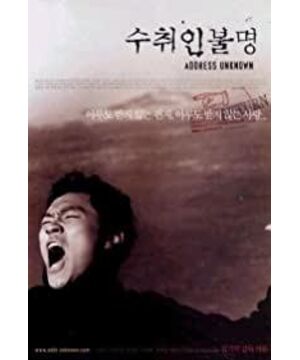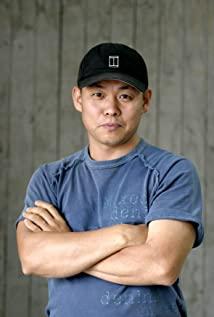This article will take the realist film "Unknown Recipient" as an example to analyze the aesthetic style and characteristics of the famous Korean director Kim Ki-duk, and interpret Kim Ki-duk's aesthetics of marginal death, violence and realism by analyzing the characters and plots in the film. feature. Kim Ki-duk's films are very personal. His films often use a lot of metaphors, and most of the protagonists are marginalized people. Death is their way of self-salvation and self-liberation. The "edge death aesthetics" is Kim Ki-duk's unique aesthetic style. Kim Ki-duk is not afraid to show the "evil of human nature" in front of people nakedly, and escalate the violence of action to the violence of the characters' hearts. In the face of ugly reality, Kim Ki-duk is a warrior who pierces the abscess with a knife. Violence is contagious. A cruel beauty was born.
Kim Ki-duk is a well-known ghost director in South Korea. He can often show the lives of marginalized people from a unique perspective, directly and profoundly revealing the ugliness of human nature. However, because of the extreme violence and sex in his works, most conservative Koreans cannot accept his works. Korean film critic Jang Sang-myung once said: "Kim Ki-duk is just a simple and naive collage of sex and other things. Together." Influenced by Freudianism, Kim Ki-duk often discusses sex in his works, but it is not a simple show of sexuality, which has deep human and social connotations; Kim Ki-duk loves violent aesthetics, but what he shows is not a Hong Kong film Violence is the catharsis of the marginalized characters in his films when they are deeply oppressed, and his violent aesthetics are tragic. South Korea is a suffering country, and any elegant and romantic thought will be swallowed by the harsh reality in South Korea. "Unknown Recipient" is Kim Ki-duk's most direct realistic work, reflecting the aesthetic characteristics of Kim Ki-duk's films. 1) Marginal death aesthetics Kim Ki-deok was poor in his childhood, was often beaten by his father and was forced to drop out of school. He was often bullied by children younger than himself due to his physical weakness. His special life experience made him pay close attention to the lives of marginalized people. , which can show the evil of human nature in an unexpected lens. Freudianism has far-reaching influence on film aesthetic theory. South Korea was influenced by the European New Wave movement in the late 1980s, so traces of Freudian thought can be seen in Kim Ki-duk's films from time to time. Freud once said that due to the conservatism and inertia of human instinct, the goal of life must be an ancient state of the body, a most primitive state, and the ultimate goal of all life is death. In Kim Ki-deok's films, the marginalized people who are oppressed by life will take the road of revenge with a very decisive attitude. After revenge, the huge grief in their hearts will also cause them to self-destruct. In a special state of existence, death has become their only home. As a means of expressing tragedy, death has profound aesthetic value. The story of "Unknown Recipient" takes place in a small remote village in South Korea where the US military was stationed in 1970. Taking the relationship between Enluo and the US soldier, Zhang Wu and his mother as clues, it shows the pain of the Korean people after the Korean War , confusion and emptiness. The protagonist, Zhang Wu, is a very typical marginalized character, born to his mother and a black American soldier during the war. His dark skin and mixed-race identity have become a sign of shame. Because of being different, not only has he been ridiculed and discriminated against, but also not accepted by this society. The desperate Zhang Wu can only fight a brutal dog butcher, who is also the lover of Zhang Wu's mother. Zhang Wu has a violent personality and often beats and kicks his mother who harbors unrealistic fantasies, but he has a benevolent heart for dogs. The dog butcher was disgraceful in the eyes of others because of his identity, and he was annoyed. He forced Zhang Wu to slaughter the dog step by step, venting his anger on Zhang Wu. The dog butchers did not take Zhang Wu seriously. When he went to buy a dog, Zhang Wu could only curl up in the dog cage in the back seat. Zhang Wu himself was like an abandoned dog. After Zhang Wu and the dog butcher couldn't resolve the conflict, they went to work in a factory. He was finally accepted by the factory owner. Unexpectedly, he was wrongly accused of stealing by his colleagues. , Zhang Wu completely lost hope. The dog slayer kept insulting Zhang Wu, Zhang Wu chose to kill the dog slaughterer by killing the dog, killing the person who has been trampling on his dignity as a person, like a ravaged slave Finally, he stood up to take revenge. In the end, he chose to commit suicide amid anger and despair. The character's emotions reached a climax. He quickly ran away on a bicycle, rolled over and inserted it into the soil to form a "V", which is victory and an epitaph, Kim Ki-deok. End the tragic life of the protagonist in a somewhat absurd and reasonable way. The tragedy of Zhang Wu's style is a special product of that era, due to the character of loneliness and despair, and it is also caused by the society and others. In a heavy and dark destiny In front of him, death is the only destination. At the same time, people are dazed and aware of the insignificance of personal power. In the ancient Greek classic tragedy "Oedipus the King", Oedipus kills his father and marries his mother, and finally finds himself escaping Instead of fate, he chose to commit suicide. According to Freud's psychoanalytic theory, the dog slayer is equivalent to the role of "father". "Gun" and "knife" signify male reproductive organs. Father", cut off with "knife" The name engraved by the father on the mother's breast, completed the process of marrying the mother, and finally found that he could not overcome his fate, and chose to commit suicide. The use of Oedipal tragedy in Kim Ki-deok's films also enables us to better appreciate the fate of the characters. Sadness arises spontaneously, and the aesthetic value of "death" is highlighted. 2) Aesthetics of Violence Violence is one of the enduring themes in movies, but "aesthetics of violence" as a technical term became popular in the mid-1990s. Hao Jian, a professor at the Department of Film Studies at the Beijing Film Academy, once put forward that the so-called aesthetics of violence is “turning violent or bloody things into pure formal pleasure, which provides people with a sense of form other than moral education, and reflects the collective unconsciousness of human beings. However, in "Unknown Recipient", the violent scenes are very lifelike, giving the audience a form of pleasure rather than fear and reflection on the brutal nature of human beings. Kim Ki-duk himself once said; , What is the troublesome thing? Is it just aggression against weaker things? Killing a dog or a frog is nothing, but killing a man is against the law. In this chaotic society, many people use violence against weak things within the scope of the law. "In "Unknown Recipient", the heroine Enluo was beaten in the left eye by her brother when she was a child, and became the first victim of violence in the film; Zhang Wu's mother was in a dispute with her neighbors when she was a child. In the end, it will always rise to the level of violence. Between people, words cannot solve problems; Zhang Wu violently beats his mother every time he sees his mother being obsessed with the United States; the dog slayer sees his lover being beaten, and it will intensify. Beating Zhang Wu; the film's "bystander perspective", En Wu, is often bullied by younger gangsters because of his weak strength. Violence is a part of each character's life in the play, the source of everyone's pain, and it is also the source of everyone's pain. The outlet of pain has become a language of self-expression. Victims of violence will also become perpetrators in front of weaker opponents. In the film, the "cold weapon" bow and arrow, the hot weapon "bullet" and the planes that come from time to time in the air The roar of the movie is warning the audience that this is a place where brutality and violence coexist. The heroine Enluo finally stabbed the cured left eye with a knife, and Zhang Wu's mother finally ate Zhang Wu's body raw, leaving the When he returns to his mother's body, violence is more cruel than giving to others. The use of violence to remove the part of the self that he hates makes the id return to goodness. This cruelty is also reflected in Kim Ki-duk's films vividly. It is the unique aesthetic feature of Kim Jide's films. 3) Realistic Aesthetics Zhu Xiaofeng once said in "Film Aesthetics": "From an aesthetic point of view, criticism of human life and culture has dominated the development of art and the evolution of aesthetic forms. Cinema is no exception, and as a cultural phenomenon, cinema is based on a constant critique of human life. " In Kim Ki-deok's films, criticism and reflection on reality are the main themes, and the films have certain social value and aesthetic significance. In "Unknown Recipient", there are direct satires of social reality and metaphors. We can directly see that the drugs, guns and pornographic magazines flowing out of the US military camp are corroding Korean youth, making their ignorant souls more money-worshiping and nihilistic; the government is very arbitrary in the treatment of veterans who fought against North Korea. , There are soldiers who were physically disabled during the war but did not have any pensions, and the families of martyrs who were originally awarded the Medal of Honor because the government suspected that the martyrs were not dead but fled to North Korea and were monitored; for the South Korean government, the lives of American soldiers Far more valuable than the lives of Koreans; the U.S. military dismissed Zhang Wu's mother, Zhang Wu's mother kept writing letters to her "husband" far away in the United States, but never really sent them. Despair... Kim Ki-duk calmly and restrained exposes these ugly realities, in the handling of details and transitions, neatly, without traces, but without losing the strength of the attack. In addition, Kim Ki-duk's sympathy and understanding for North Korean soldiers can also be seen in the film. Eun Woo picked up a soldier's leather bag from the ditch where the North Korean soldiers were buried. As Eun Wu slowly wiped away the loess in the photo in the bag, we could still get the soldier's wife and children. In war, the people are always the victim. Kim Ki-duk uses his films to present the reality of society as he understands it. Kim Ki-duk is accustomed to using a lot of metaphors in movies. The relationship between the heroine Enro and her brother indicates the relationship between South Korea and North Korea. Enro's disability since childhood is related to her brother's ignorance and love of violence. The deformed love relationship between Enlo and the American soldier also symbolizes the relationship between South Korea and the United States. Although the American soldier helped Enlo heal his left eye, he also forced Enlo to become his "girlfriend" and obey all his arrangements, just like The hypocrisy of the United States to help South Korea robbed South Korea of its will to independence. The struggle between the United States and the Soviet Union for hegemony has caused great suffering for the people of the Korean Peninsula. In the end, South Korea has to thank the United States for its help and cannot do without the United States. This kind of social reality makes Kim Ki-duk very dissatisfied. It is reflected in the film. The most typical scene is at the end, Zhang Wu's mother finally received a reply letter from the United States, and the sender was Clinton (then the president of the United States). Reply to ask: Zhang Wu's mother, how are you? I'm fine. At this time, Zhang Wu's mother had already lost hope and set herself on fire. American soldiers read the letter lying on the grass, smoke enveloped the earth, the sun is about to rise, and hope flickers. South Korea has always had a tradition of satirizing the government and the basis of realism. As a Korean filmmaker, Kim Ki-duk can also see this "Korean characteristic" in his films.
In Kim Ki-duk's films, we often see unexpected behaviors and character traits of characters, and it is these special features that make Kim Ki-duk's films unique. Kim Ki-duk deeply reveals the good and evil of human nature, social evils, and the tragic fate of some marginalized people's life contradictions. Kim Ki-duk's films have the personal style of an independent director, showing his aesthetics of death and violence, and as a Korean filmmaker, his films have the characteristics of Korean realism. Kim Ki-duk's own style is also constantly changing. As one of Kim Ki-duk's many films, "Unknown Recipient" continues Kim Ki-duk's basic aesthetic concept and is very representative. The discussion of good and evil and the reincarnation of fate
View more about Suchwiin bulmyeong reviews










